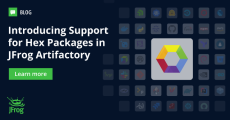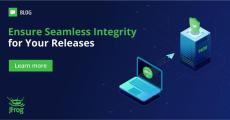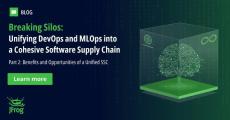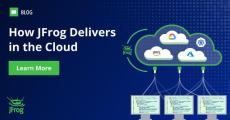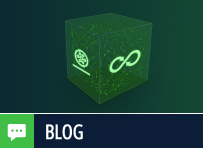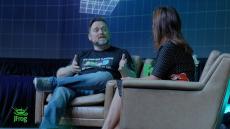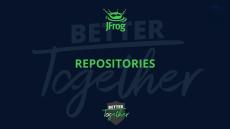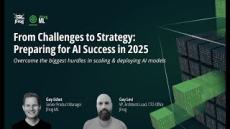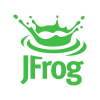|
By Brian Chang
JFrog has always prioritized universality, ensuring software development teams have true freedom of choice. Core to the JFrog Platform, JFrog Artifactory is the world’s most versatile artifact manager, natively supporting nearly 40 package types. After taking in valuable feedback from the developer community, we’re thrilled to discuss how we’re further expanding our universe with the support of Hex packages.
|
By Nitin Khanna
In today’s hybrid infrastructure landscape, migrating applications to the cloud unlocks significant financial and technological benefits. Whether internal or external, these applications require robust, efficient infrastructure. Cloud providers like Amazon Web Services (AWS), Google Cloud, and Microsoft Azure offer frameworks to help organizations build better systems.
|
By Irena Guy
We here at JFrog have long advocated for promoting – never rebuilding – release candidates as they advance across the stages of your SDLC. For many JFrog customers, that meant using JFrog’s “Build Promotion” capabilities. Now you can level up your CI/CD game with promotions using Release Lifecycle Management (RLM)! In this article we’ll show you why promotions with RLM are more simple, secure, and scalable than our legacy build promotion API.
|
By Sean Pratt
The speed of today’s software development lifecycle is only getting faster. However, the complexity of today’s pipelines make it hard to track and manage the processes software releases must go through. With increasing regulatory pressures, ensuring and proving your software has gone through the necessary quality controls is no longer nice to have – it has become a necessity.
|
By Bill Manning
Just like in traditional software development, creating AI applications isn’t a one size fits all approach. However, many of the challenges and concerns facing AI/ML development teams share common threads – difficulties getting models to production, tangled infrastructure, data quality, security issues, and so on.
|
By Yuval Fernbach
The synergy between DevOps and MLOps is more crucial now than ever. However, merging these two paradigms into a coherent software supply chain poses a unique set of challenges that can leave teams feeling overwhelmed. From the complexities of managing model dependencies to adapting conventional CI/CD tools for advanced machine learning (ML) workflows, the path to integration isn’t without its twists and turns.
|
By Yuval Fernbach
In this blog series, we will explore the importance of merging DevOps best practices with MLOps to bridge this gap, enhance an enterprise’s competitive edge, and improve decision-making through data-driven insights. Part one discussed the challenges of separate DevOps and MLOps pipelines and outlined a case for integration.
|
By Eldad Assis
Petabytes of monthly data transfer. Thousands of concurrent requests per customer. Hundreds of thousands of requests per minute per customer. The JFrog Platform is a mission critical piece of software development and delivery infrastructure for companies that require performance at scale. When you’re supporting thousands of developers, even a minute of downtime or delay can mean millions of dollars lost productivity.
|
By Yuval Fernbach
As businesses realized the potential of artificial intelligence (AI), the race began to incorporate machine learning operations (MLOps) into their commercial strategies. But the integration of machine learning (ML) into the real world proved challenging, and the vast gap between development and deployment was made clear. In fact, research from Gartner tells us 85% of AI and ML fail to reach production.
|
By The JFrog Team
We can all agree that visibility into resource usage is crucial for optimizing performance and managing costs to drive your business — especially in today’s cloud-driven world. MyJFrog is a comprehensive management portal for overseeing JFrog cloud platform instances and subscriptions. It provides a centralized control tower to manage and monitor subscriptions, resources, and usage.
|
By JFrog
JFrog's VP of Product Marketing, Jens, discusses how the company is positioned at the crossroads of traditional and AI-driven software development. Learn how JFrog's platform acts as the crucial system of record, converging multiple code sources into a unified pipeline through strategic moves like the GitHub partnership and key acquisitions. Hear Jens' insights on JFrog's role in shaping the future of software delivery.
|
By JFrog
Learn how to streamline release governance with JFrog's Release Lifecycle Management and Evidence Collection.
|
By JFrog
Unlock the full potential of your software development process with the JFrog Artifactory - Repositories Management course! This free, self-paced course will guide you through everything you need to know about managing repositories, improving DevOps workflows, and optimizing your software supply chain. Learn how to: Subscribe for more tutorials, tips, and insights into DevOps, CI/CD, and management.
|
By JFrog
Three years after Log4Shell made headlines, its impact is still a wake-up call for developers and organizations worldwide. Are your systems secure? In this video, we break down: Stay ahead of vulnerabilities and protect your holidays with actionable insights and a quick demo of the JFrog Platform. Watch now to defend your systems and avoid those on-call holiday headaches!
|
By JFrog
This webinar features exclusive findings from the 2024 State of AI & LLMs Report and is designed to help you navigate today’s AI/ML challenges to effectively plan for 2025. Guy Levi (VP, Architects Lead) and Guy Eshet (Senior Product Manager, JFrog ML) will explore key trends and discuss how a unified platform that integrates between MLOps and DevOps can make a real difference for your organization when it comes down to security, efficiency and more.
|
By JFrog
Whether you're dealing with,,, the number of software solutions is rapidly increasing and creating tool sprawl. You'll need a tool for , management, , , , and more!
|
By JFrog
Insightful stories from experts on emerging trends and technologies that will redefine DevOps in the coming years.
|
By JFrog
The world of machine learning and AI has moved out of the lab and into the critical path of nearly all software applications. JFrog brings DevSecOps best practices to AI/ML development to accelerate AI/ML initiatives with confidence.
|
By JFrog
What happens when the leaders in code management and GenAI join forces with the binary management and software supply chain security experts? Join Yonatan Arbel, Developer Advocate, JFrog and Brian A. Randell, Staff Developer Advocate, GitHub as they detail game-changing advances in the world’s top DevOps and DevSecOps platforms and how together, JFrog and GitHub are creating tectonic shifts in the development landscape.
|
By JFrog
Developers used to code. Now they manage, import, secure, build, package, deliver and monitor… the list of every “Ops” is ever-growing. As if this wasn’t enough, they are now being asked by the C-suite to work with data science and machine learning teams in a gold rush of AI and ML-enabled application delivery. In our annual swampUP kickoff, join JFrog Co-founder and CEO Shlomi Ben Haim - alongside a special guest - as we explore how developers may still start with code and CI, but are increasingly asked to hold the reins of EveryOps; building, securing and delivering alongside the machines and systems they created.
|
By JFrog
Cloud DevOps tools offer greater flexibility, rapid deployment, cloud automation, reduced IT costs, and low upfront costs with subscription pricing. Setting up your environment with Artifactory on the cloud on your choice provides unlimited scalability allowing you to grow according to your needs and is easily achieved by using cloud storage providers (Amazon AWS, Google GCP or Microsoft Azure) in your environment with Artifactory.
|
By JFrog
Software businesses of every industry and all sizes, from small startups to large enterprises, are looking for ways to accelerate their software development process in the race to innovate and deliver their offerings to their customers ahead of their competition.
|
By JFrog
Today, we live in a very connected world, where our devices, homes and cars all communicate with each other, and every company with a product or service has the need to develop software. It is one of the primary mediums by which they strive to provide better products, services and solutions, and has become paramount to a company's success. To continuously improve their software, companies must have sound DevOps or DevSecOps practices in place.
|
By JFrog
In today's enterprises, software is your company's everyday face, whether through the desktop, the cloud, or a mobile device, to all parts of the globe. Cars are computers on wheels. Thermostats are data terminals. Banks live in your phone. In this new world, software updates serve customer's demands. Each one you deliver is your opportunity to renew - or, if botched, destroy - their trust. How can you make every update top-notch at top speed?
|
By JFrog
Over the last several years, software development has evolved from deploying products periodically to building them on an ongoing basis using CI servers. A company's end product may be built on a daily or even hourly basis. This means that DevOps must support the continual flow of code from the individual developer's machine to the organization's production environment.
|
By JFrog
Two numbers are shaking the foundations of business. What do these two figures mean to your business? They mean that, odds are your competitive landscape is irrevocably changed - already. To start, expectations for delivery speed for new products, services, and everything are faster. The new table stakes in the DevOps world have raised the bar on collaboration, cross-organizational visibility, efficiency, even company culture. Another thing these two simple stats mean is that most businesses are already there, or heading there now.
- February 2025 (4)
- January 2025 (5)
- December 2024 (6)
- November 2024 (1)
- October 2024 (5)
- September 2024 (5)
- August 2024 (1)
- July 2024 (5)
- June 2024 (4)
- May 2024 (1)
- April 2024 (4)
- March 2024 (3)
- February 2024 (6)
- January 2024 (2)
- December 2023 (3)
- November 2023 (4)
- October 2023 (3)
- September 2023 (5)
- August 2023 (2)
- July 2023 (7)
- June 2023 (3)
- May 2023 (2)
- April 2023 (2)
- March 2023 (4)
- February 2023 (8)
- January 2023 (5)
- December 2022 (9)
- November 2022 (1)
- October 2022 (3)
- September 2022 (9)
- August 2022 (6)
- July 2022 (8)
- June 2022 (7)
- May 2022 (5)
- April 2022 (3)
- March 2022 (7)
- February 2022 (16)
- January 2022 (12)
- December 2021 (22)
- November 2021 (10)
- October 2021 (14)
- September 2021 (15)
- August 2021 (14)
- July 2021 (16)
- June 2021 (26)
- May 2021 (19)
- April 2021 (11)
- March 2021 (13)
- February 2021 (23)
- January 2021 (16)
- December 2020 (15)
- November 2020 (15)
- October 2020 (20)
- September 2020 (10)
- August 2020 (15)
- July 2020 (33)
- June 2020 (15)
- May 2020 (24)
- April 2020 (15)
- March 2020 (16)
- February 2020 (7)
- January 2020 (10)
- December 2019 (6)
- November 2019 (18)
- October 2019 (6)
- September 2019 (2)
JFrog products seamlessly integrate with practically any development environment on Earth, from legacy code to the most recent containers and micro-services.
JFrog's end-to-end platform provides a fully automated pipeline for distributing trusted software releases. Connecting all developers, DevOps engineers and product owners to end devices, the JFrog Platform ensures software flows quickly and free from interruption.
End-to-End Universal DevOps Platform:
- JFrog Artifactory: The undisputed software repository leader for integrated, universal artifact management at enterprise scale.
- JFrog Container Registry: The world’s most flexible, hybrid container registry, with enterprise-grade resiliency backed by JFrog Artifactory.
- JFrog XRay: Universal security vulnerability & compliance analysis, natively integrated with Artifactory for continuous governance across the DevOps pipeline.
- JFrog Pipelines: Universally orchestrate software releases and master the entire CI/CD pipeline from code to production.
- JFrog Distribution: Secure and validate your software releases, allowing trusted, optimized software distribution on a global scale.
- JFrog Mission Control: A single access point providing a centralized dashboard to oversee your DevOps pipeline.
Universal Artifact Management for DevOps Acceleration.


